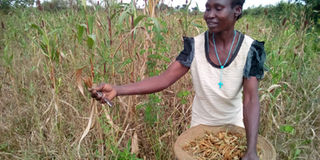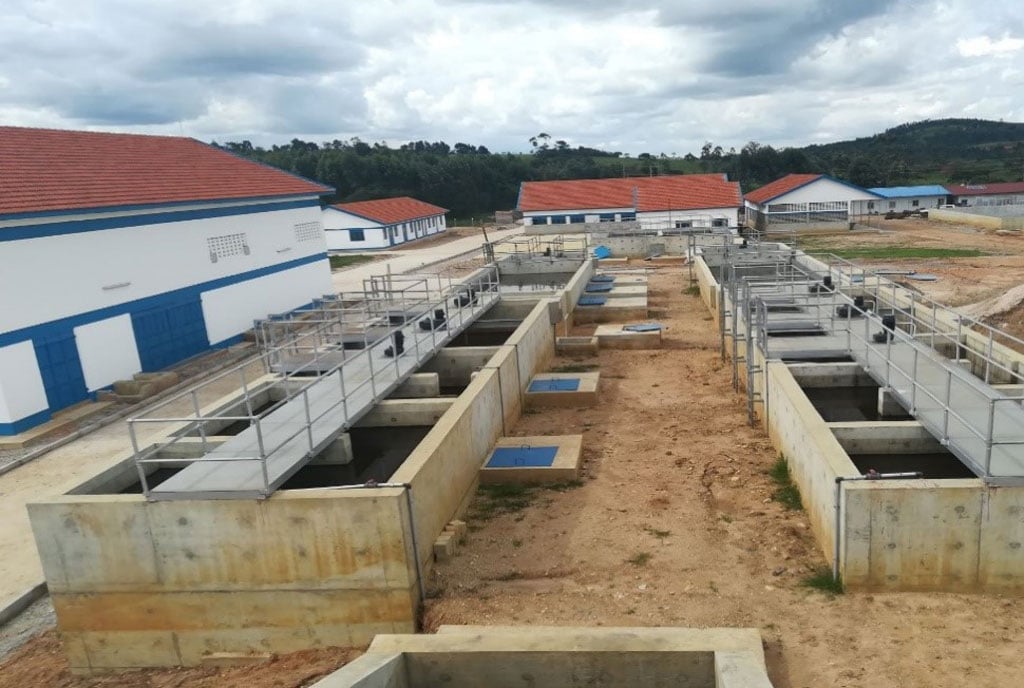Floods, drought ruin Teso’s crop harvests

Ms Mary Apiding , a farmer, harvests millet in Obule village, Soroti District, last week. PHOTO / GEORGE MURON
What you need to know:
- Mr David Omoding, a 53-year-old, farmer from Kaparis Village, Kangole sub-county in Bukedea District, has not had any decent harvest from his six-acre piece of land in the past five years.
Teso sub-region was one of the country’s food baskets, but today, its communities, especially those living in low-lying areas face food shortage and frequently depend on the government for relief.
The prolonged drought and frequent flooding has destroyed crop yields, leaving many households with barely anything to eat.
Mr David Omoding, a 53-year-old, farmer from Kaparis Village, Kangole sub-county in Bukedea District, has not had any decent harvest from his six-acre piece of land in the past five years.
The father of eight now buys food to feed his family.
“It’s not that I am lazy, but floods and drought have been destroying my crops,” Mr Omoding says.
The floods have mainly affected Kamutur, Kabarwa, Kangole, and Malera sub-counties. In Kangole alone, 1,548 households are stranded due to water logging.
According to Mr Moses Olemukan, the Bukedea chairperson, 52,000 households need food. Between May and July, famine hit many parts of Teso and Karamoja sub-regions, forcing the government to send a consignment of food.
In Kumi District, Ongino and Onapa sub-counties have also lost crops to water logging.
The district chairperson, Mr Nelson Akol Elungat, however, says the disaster response office is always helpless due to lack of resources.
In July, the government sent 6,000 tonnes of maize flour but it only benefited residents of Tisai island, the worst hit area.
Mr Steven Ongaba, the Bukedea planner, says the issue has been exacerbated by population pressure.
In the past two decades, the district population has increased from 48,000 people to more than 300,000, with the population density multiplying tenfold from 80 people per square kilometre to 300 people for every square kilometre.
“Due to the population explosion, locals in Teso continue to clear forests for farming,” Mr Ongaba says.
The Teso forest cover has declined from 53 percent in 1990 to 7.3 percent. The wetlands have also not been spared.
In 2006, Bukedea had a forest cover of 36 percent but it has since reduced to 2 percent due to uncontrolled human activities.
“The majority of the Teso population residing near wetlands have destroyed them for rice growing,” Mr Ongaba says.
He blames the environment degradation to ignorance of communities about climate change.
He adds that politicians have maintained a poor attitude towards mitigating climate change thus encouraging cultivation in wetlands.
Mr Ongaba also cites poor funding of the district natural resources department to carry out sensitisation campaigns. The department only gets Shs22m annually to run its activities.
The sub-region has experienced many floods, notably the one in 2007 that destroyed thousands of acres of gardens. The flood also left thousands homeless. Major roads, Awoja and Agu bridges were also destroyed. In 2010, another flood hit, leaving 100,000 households without food.
WHAT IS BEING DONE
Parliament recently allocated Shs258b towards conservation. The funds will support programmes aimed at increasing forest cover from 12 to 15 percent, restoring 850 kilometres of wetlands as well as evicting encroachers. President Museveni recently gave farmers who cultivated in the swamps up to September to leave or be evicted. Mr Steven Ongaba called for better legislation on environmental protection.




